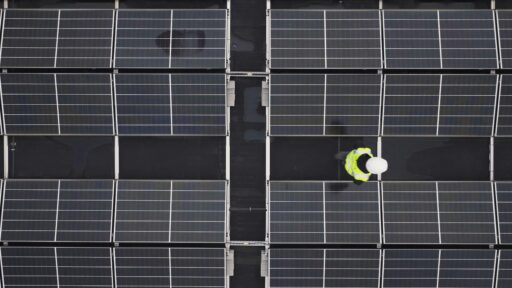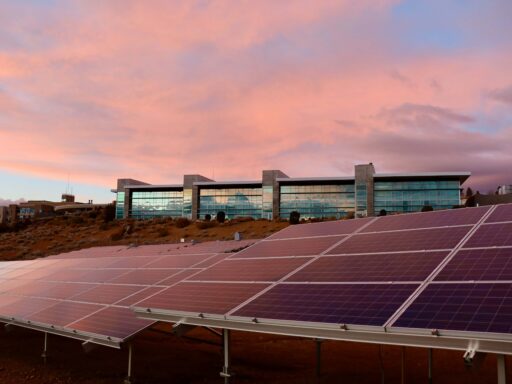Choosing between monocrystalline and polycrystalline solar panels is one of the first practical decisions in any PV design. Both are proven silicon technologies that can deliver reliable energy for decades and are readily available from mainstream suppliers.
The better choice depends on space, budget, appearance, target output, and how the rest of the system is engineered. This guide explains the differences in 2025, compares performance in plain language, and finishes with a side by side table, practical selection tips, and a concise FAQ.
What are monocrystalline and polycrystalline solar panels?
Monocrystalline solar panels explained
Monocrystalline solar panels use cells cut from a single crystal of silicon. Each solar module has a uniform lattice and a dark, consistent look. The tidy crystal structure helps charge move more easily through the cell, which is why monocrystalline modules typically reach higher efficiency than other mainstream types.
Key characteristics
- Manufacturing: cells are grown as cylindrical ingots and sliced into wafers.
- Efficiency: typically higher than polycrystalline at the same size.
- Temperature behaviour: typically exhibits slightly better temperature coefficients, resulting in a lower output drop on hot days.
- Aesthetics: popular for all-black or near-black roofs, where a uniform look is desired.
- Price: often a premium over polycrystalline, though the gap has narrowed.
Polycrystalline solar panels explained
Polycrystalline solar panels use cells cast from multiple silicon crystals. The mixed structure adds boundaries inside each cell, which can slow electrons compared with mono cells. You see that as a modest efficiency penalty and a speckled blue or bluish grey finish. With ample roof area, these modules can still offer strong value.
Key characteristics
- Manufacturing: molten silicon is cast in blocks, then sliced into wafers.
- Efficiency: generally lower than monocrystalline at a given footprint.
- Temperature behaviour: often slightly less favourable coefficients.
- Aesthetics: visible crystal grains give a variegated look.
- Price: usually lower upfront cost per solar panel.
Performance comparison: monocrystalline vs polycrystalline solar panels
Efficiency and power output
Monocrystalline modules typically deliver higher efficiency, allowing you to achieve the same power with fewer solar panels or a smaller roof area. That helps with compact homes and tight layouts.
Polycrystalline modules can still achieve respectable efficiency, but to hit the same target, you may need more solar panels or more space. Higher efficiency improves power density; annual energy still depends on design, shading, climate, and maintenance.
Cost and affordability
Polycrystalline modules are often cheaper per solar panel and frequently per watt, but the price gap shifts by brand, range, and market conditions. Look at the full cost picture: racking, cabling, labour, permits, and commissioning, not modules alone.
Temperature coefficient and heat performance
All crystalline silicon solar panels lose some output as they heat up. Many monocrystalline modules publish slightly better temperature coefficients than comparable polycrystalline modules, although differences are small and model specific. That helps preserve energy production on hot days or when airflow is limited.
Lifespan and warranty
Both monocrystalline and polycrystalline solar panels are designed for long service lives when installed and maintained to specification. Typical guarantees include a product warranty and a performance warranty; terms vary by brand and range. Expect some degradation over time, and check the warranted curve.
Aesthetics
Monocrystalline solar panels are darker and more uniform, which many homeowners prefer on visible roof faces. Polycrystalline solar panels often appear bluer due to their crystalline pattern. Appearance does not directly influence electricity generation, but it can impact planning and buyer preferences.
Side by side comparison table: mono vs poly solar panels
| Attribute | Monocrystalline | Polycrystalline |
| Cell structure | Single crystal silicon per cell, uniform lattice | Multiple silicon crystals per cell, visible grain boundaries |
| Typical module efficiency | Higher at a given size, better for tight spaces | Lower at a given size, needs more area for the same power |
| Power density | Greater watts per square metre | Lower watts per square metre |
| Temperature coefficient | Slightly better, smaller output loss at high temperatures | Slightly worse on average |
| Aesthetics | Dark, uniform, often chosen for all black arrays | Speckled blue or bluish grey appearance |
| Price range | Usually, a higher upfront cost per solar panel, the price per watt can be close | Usually lower upfront cost per solar panel and often per watt |
| Lifespan | Multi decade design life when installed to specification | Multi decade design life when installed to specification |
| Warranty | Strong performance warranties common; longer product terms on premium lines | Warranties vary by range; product terms can be shorter |
| Best fit | Space constrained roofs, premium visual requirements, higher output targets | Budget sensitive projects, ample roof or ground area, appearance less critical |
A summary of the table: The comparison between monocrystalline and polycrystalline is primarily about constraints. Choose monocrystalline for higher efficiency and a uniform look when space is tight. Choose polycrystalline when cost is the priority and area is available.
Pros and cons of monocrystalline solar panels
Pros
- Higher efficiency, fewer solar panels for the same power.
- Better power density for tight sites.
- Dark, uniform appearance that suits visible roofs.
- Broad ecosystem with advanced cell technology and strong warranty options.
Cons
- Typically higher upfront cost per panel.
- Marginal gains may not justify the premium on very large, unconstrained sites.
Pros and cons of polycrystalline solar panels
Pros
- Lower upfront cost per panel.
- Good value when space is abundant.
- Proven technology with many suppliers and formats.
Cons
- Lower efficiency, so more solar panels or area may be needed.
- Aesthetics may be less desirable on prominent roofs.
- Slightly less favourable temperature coefficients on average.
How to choose between monocrystalline and polycrystalline panels?
- Map the roof or site
Measure usable area, shading, setbacks, walkways, and mounting limits. If space is limited, monocrystalline solar panels help you achieve your target power within the available footprint. - Set an energy target
Size the system on annual energy goals rather than nameplate power alone. Use a local yield estimate to translate solar panel choices into expected production. - Check BOS and labour impacts
Fewer, higher power modules can cut hardware counts and installation time. More lower power solar panels can still be cost effective on simple sites. - Consider appearance and planning
Where planning or preference favours a uniform look, monocrystalline all black modules may be worth the premium. On unseen faces or ground mounts, appearance matters less. - Think about temperature and airflow
In hot climates or low airflow locations, the small advantage in monocrystalline coefficients can protect energy yield across the year. Maintain spacing and ventilation either way. - Compare warranties and support
Check product and performance warranty terms, claim processes, and local service capability. Strong support adds real value over the life of a solar energy system. - Run a total cost of ownership view
Compare not just module cost, but racking, inverters, cabling, labour, monitoring, and any structural works. Other components in the bill of materials can offset a slightly higher module price.
Monocrystalline vs polycrystalline: which solar panels are best for you?
If roof space is limited or a uniform appearance is important, monocrystalline is often the better choice. If space is plentiful and budget is the priority, polycrystalline can be a sensible value choice.
Decide on system goals, site realities, and lifetime energy outcomes rather than module type alone. For residential solar panels, appearance and roof area often lead to mono; for commercial solar panels and ground mounts, value and scale often favour poly.
Other solar panel technologies to consider
- Monocrystalline TOPCon: an n-type structure paired with mono wafers, aimed at higher efficiency and improved degradation behaviour.
- Monocrystalline heterojunction: crystalline wafers with thin amorphous layers to lift efficiency and reduce temperature related losses.
- Back contact cells: conductors on the rear to improve light capture and appearance in premium modules.
- Thin film solar panels: options like cadmium telluride and CIGS that offer different formats and diffuse light performance.
- Bifacial solar panels: capture reflected light to boost energy where conditions are suitable.
FAQ – monocrystalline vs polycrystalline solar panels
Which lasts longer, monocrystalline or polycrystalline panels?
Both are designed for multi decade service when installed correctly. Some premium monocrystalline lines offer longer product warranty terms; specifics vary by brand and range.
Which solar panel type is better: monocrystalline or polycrystalline?
It depends on your constraints. Choose monocrystalline for higher efficiency, space limited roofs, and a uniform look; choose polycrystalline when cost is the priority and area is plentiful.
Is polycrystalline still worth it in 2025?
Yes. Polycrystalline remains a solid value choice for budget led projects with ample area, even though the price gap with monocrystalline can be small on a per-watt basis.
Can I mix mono and poly panels in one system?
It is possible, but not ideal, within the same string or MPPT due to differing electrical characteristics. If you must mix, separate them on different MPPT inputs and match voltage and current ranges carefully.
Which type of solar panel is cheaper: monocrystalline or polycrystalline?
Polycrystalline panels are typically less expensive per panel and often per watt. The exact cost gap varies by brand, range, and market conditions.
Which type of solar panel is best for homes vs commercial projects?
Homes with limited roof space typically benefit from monocrystalline for higher power density and aesthetics. Commercial solar panels on large roofs or ground mounts often favour polycrystalline for overall value.
 EN
EN ES
ES DE
DE PL
PL IT
IT FR
FR GR
GR



